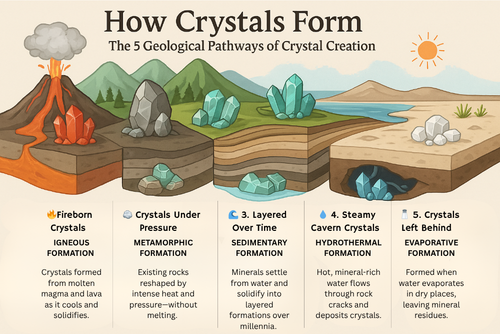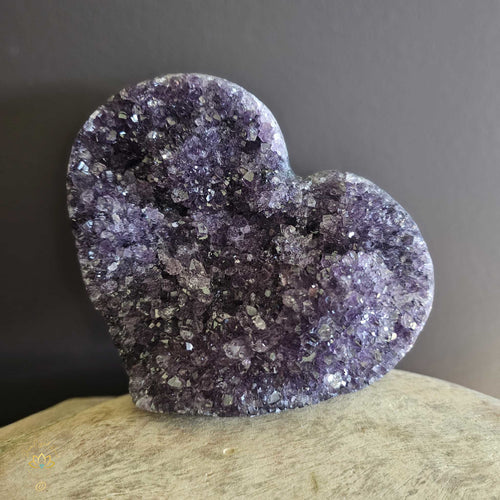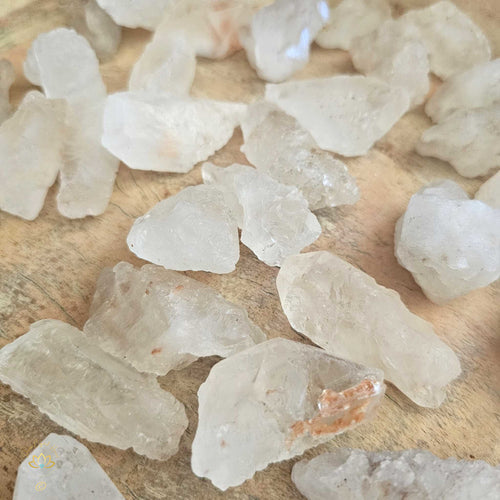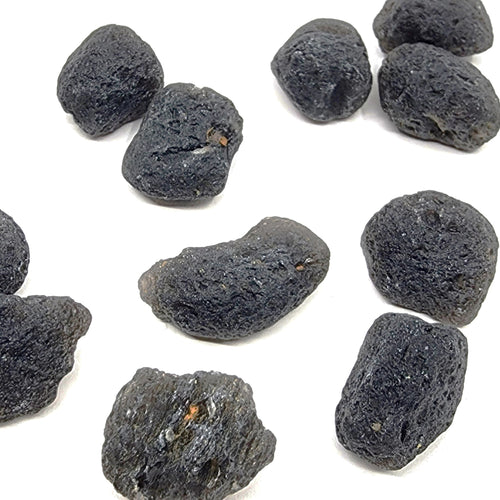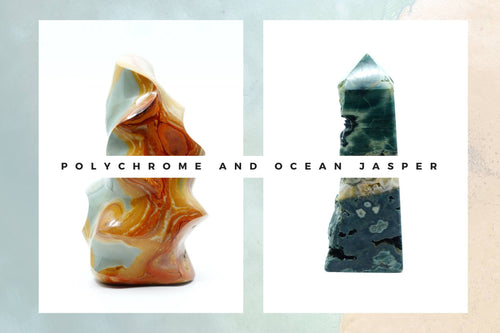Next Facebook Live Sale Wednesday January 14 @ 6PM QLD
From Molten Magic to Crystal Clarity: How Crystals Grow
Ever wondered how crystals are formed? Whether it’s the shimmering sparkle of quartz, the earthy greens of malachite, or the magical glow of selenite, every crystal tells the story of Earth's powerful creative forces.
Crystals begin life deep in Earth’s belly – born of fire, pressure, water, and time. In igneous wombs, molten rock cools and slow-cooks crystals; in metamorphic kitchens, pressure kneads minerals into new forms; sedimentary layers stack mineral seeds over eons; hydrothermal springs usher hot, mineral-rich water that crystallizes gems in veins; and salty evaporative basins leave behind glittering minerals as water dries up. Each process yields its signature stones – and each stone carries a metaphysical whisper of its birth. Grab a cup of Earth’s essence (or your favourite crystal-infused tea), and dive in.
Below, we’ll take you through the five main ways crystals form in nature, with real life examples you can discover in our crystal collections. This is your beginner-friendly, metaphysically curious, science-rooted guide to how crystals grow.
1. Igneous Formation – Fireborn Crystals
Crystals Grown from Magma and Lava
Crystals like quartz, topaz, and peridot form when hot, molten magma cools and hardens. Deep underground, the slower the magma cools, the larger the crystals become. These crystals emerge from the Earth's fiery belly and often carry strong energy linked to transformation and clarity.
These fire-forged stones carry fiery symbolism: they are transformation anchors. Their very birth from lava and magma ties them to change, renewal, and bold action. In metaphysical lore, quartz (a classic igneous crystal) is seen as a master amplifier and purifier, echoing the lava’s power. Fire-born crystals like garnet or Citrine (also igneous or high-heat products) are said to ignite passion, creativity and courage – reflecting magma’s molten energy. Think of them as Phoenix stones, urging you to rise renewed from any challenge.
Examples: Quartz, Obsidian, Peridot, Topaz
2. Metamorphic Formation – Crystals Under Pressure
Minerals Reimagined by Heat and Pressure
Metamorphic crystals are created when existing rocks are altered by intense heat and pressure. No melting — just a transformational squeeze! In these extreme conditions, minerals rearrange, and new crystals grow. For instance, garnet often blossoms within schist or gneiss as manganese and aluminium recrystallize under compression. Likewise, jade and sapphire (corundum) can form in metamorphic zones.
Metamorphic stones symbolize resilience and transformation through pressure. Just as they were forged by extreme conditions, these crystals (garnet, kyanite, smoky quartz, etc.) are thought to help us endure stress and emerge stronger. They encourage adaptability and inner growth – a mineral mirror of life’s challenges. Think of garnet born under stress, it’s often called a stone of commitment and grounding, reminding us that beauty can form through hardship.
Examples: Garnet, Kyanite, Sapphire, Jade
3. Sedimentary Formation – Layered Over Time
Crystals Born from Water and Patience
Sedimentary crystals arise from layers. Sedimentary rocks are cemented from mineral particles or organic debris deposited on Earth’s surface. In some cases, minerals dissolved in water precipitate and solidify as layers of rock. Malachite (a vibrant green copper carbonate) is a classic example: it forms when copper-rich solutions oxidize and deposit layers of crystalline malachite on rock surfaces. In effect, malachite is a byproduct of the weathering and oxidation of primary copper minerals often coating rocks in striking green banded layers.
These water-gently-formed minerals carry a grounded, nurturing vibe. Sedimentary crystals often symbolize patience, history, and memory. They encapsulate layers of time – like tree rings in stone. Malachite, for example, is associated with emotional healing and growth: it shields and balances the heart while revealing ancient patterns, much like its layered formation. (True to form, malachite is linked to protection, emotional balance, and spiritual growth. Other sedimentary-born stones (like turquoise or some limestones) are similarly thought to connect us to Earth’s rhythm and to the wisdom of ages.
Examples: Malachite, Turquoise, Chrysocolla
4. Hydrothermal Formation – Crystals in Steamy Caverns
When Hot Water Flows and Crystals Grow
Deep in the crust, hydrothermal systems bubble – hot, silica-rich waters flow through cracks and veins. As these superheated fluids cool, they deposit minerals and grow crystals. Hydrothermal quartz is the rule: water rich in dissolved silica seeps into cavities and, upon cooling, precipitates quartz – often tinted by trace elements. This process forms geode-lined pockets and vein-filling crystals. A prime example is amethyst (purple quartz): it commonly forms in hydrothermal veins and cavities of volcanic rock. (Tourmaline and aquamarine also grow from hot boron-rich fluids in pegmatites and veins.)
These water-and-heat born crystals blend opposites – fiery formation tempered by fluid. Spiritually, they are often seen as alchemical stones of balance. Amethyst, a hydrothermal beauty, famously carries calming, protective energy – a perfect marriage of hot formation with cool serenity. In general, hydrothermal stones are linked to purification, intuition and emotional healing. They remind us that growth often happens in hidden places, and that clarity can come through transformation. As a fun aside, geodes (hollow spheres lined with crystals) grow this way: imagine steam cooking up an amethyst surprise inside a rock!
Examples: Amethyst, Tourmaline, Aquamarine, Fluorite
5. Evaporative Formation – Crystals Left by Water
When Lakes Dry and Minerals Stay
When lakes or seas evaporate, dissolved minerals are left behind as evaporite crystals. In arid basins, water loss concentrates salt and minerals until they precipitate in layers. Rock salt (halite) and gypsum (calcium sulfate) are the most common products. For example, halite forms cubic salt crystals as saline waters dry + Gypsum forms its tabular crystals similarly in drying lagoons. Even at home, you’ve likely seen this: let a saltwater solution evaporate and glittering halite cubes remain!
These dry-basin crystals symbolize purification and clarity. Halite (table salt) is often thought of as cleansing both physically and energetically – it “clears the air” and wards off negativity. Gypsum (satin spar or selenite) carries peaceful, cleansing vibes. In essence, evaporative stones represent the clarity that comes when distractions (water) are removed – like spiritual focus after tears dry. They teach letting go: as the water evaporates, only the pure crystal stays.
Examples: Halite, Selenite, Gypsum
The Meaning Behind the Growth
Each crystal formation process adds to the energy a stone carries. Fire-born crystals help with bold change, metamorphic ones with strength, sedimentary stones with wisdom, hydrothermal gems with peace, and evaporative minerals with clarity.
Want to learn how to work with these energies in everyday life? Stay tuned for our upcoming guide: Using Crystals for Beginners – Energy, Intention & Everyday Magic.
Explore Further
If you’re ready to connect more deeply with Earth’s elements, explore our full crystal collections, each piece carries the ancient energy of how it was formed.
Curious about the science behind these mineral formations? Discover more at Mindat.org’s article on crystal growth — one of the world’s largest mineral databases.
Every crystal was once a whisper in the Earth. Now, it speaks to you.


